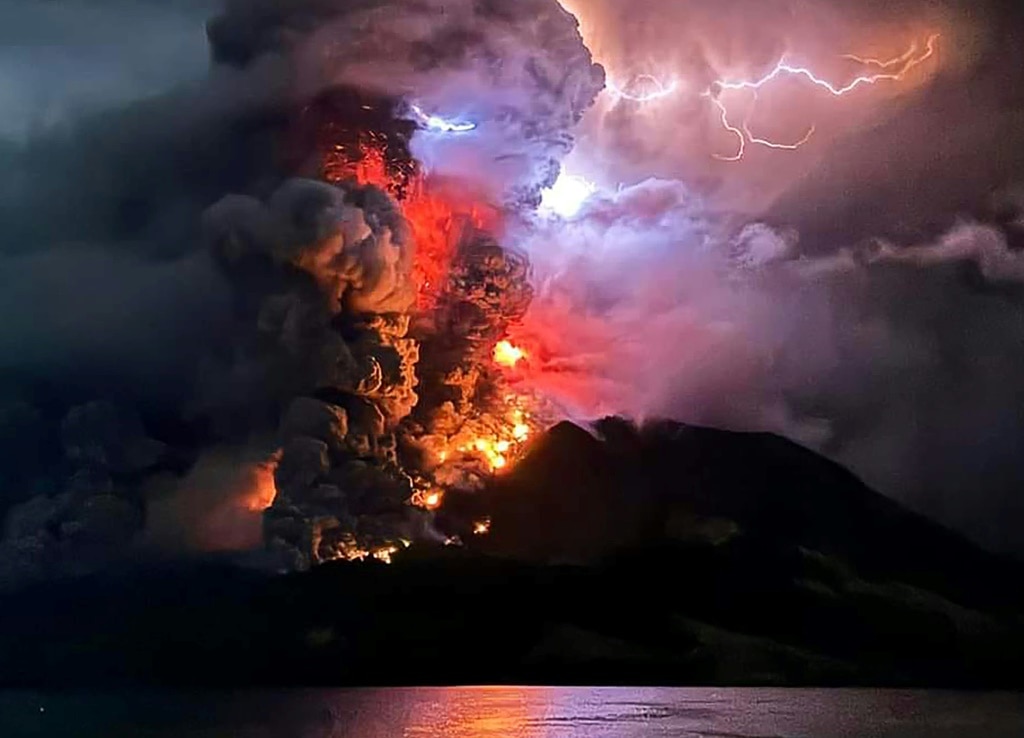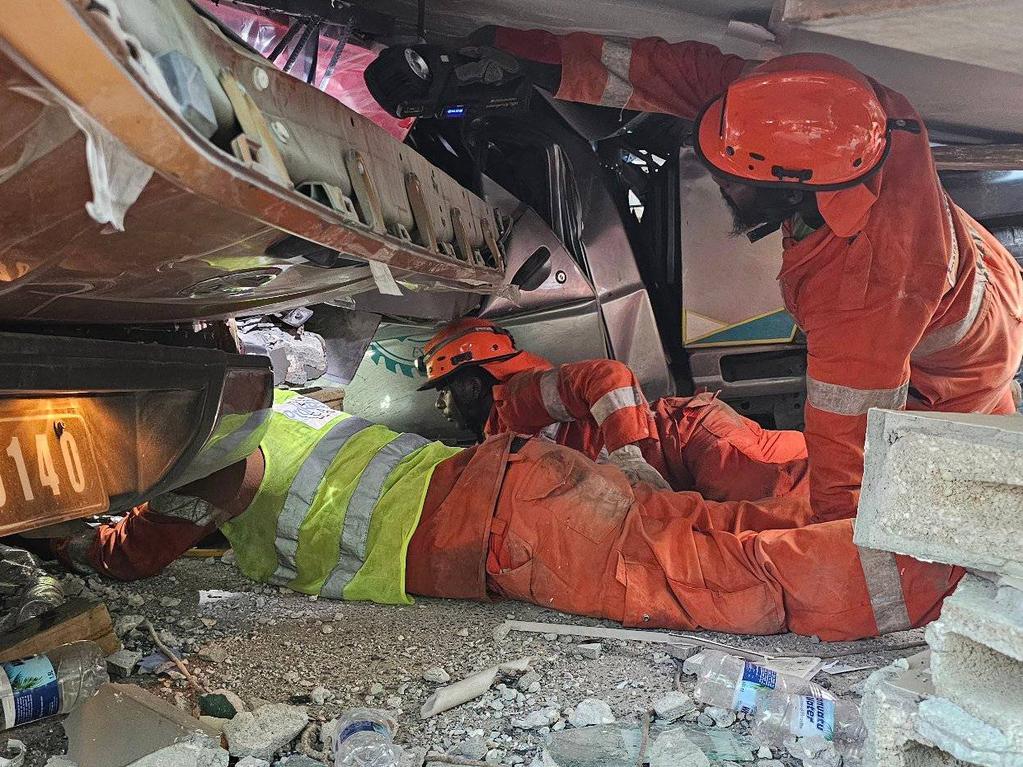Another tsunami disaster waiting to happen 20 years after Boxing Day tragedy
Indonesian and Acehnese officials vowed to build a stronger, safer city after the 2004 tsunami, but two decades later an early warning system is perilously degraded.

Twenty years after the Boxing Day tsunami decimated Banda Aceh, Indonesia’s leading tsunami scientist has warned that a similar scale disaster would again cause tens of thousands of deaths thanks to a degraded early warning system, a lack of emergency infrastructure and a building boom in high-risk coastal zones.
“People are more aware now of what to do after a big quake, unlike in 2004 when they saw the water recede and went to have a look or to pick up fish from the shoreline,” says Professor Syamsidik, who heads Indonesia’s Tsunami and Disaster Mitigation Research Centre (TDMRC).
Thousands of people died in 2004 because they ran towards the curiously receding waters instead of away from it, leaving it too late for them to evacuate when the waves came.
Most people know not to do that now thanks to intense public education campaigns, Professor Syamsidik says, “but we are not in a better position in terms of spatial planning and emergency infrastructure. We keep telling the government and community that we have to be stricter with planning regulations, which are not being effectively implemented.”
Of the estimated 228,000 people who died across 14 countries when a magnitude-9.2 earthquake struck southwest of Banda Aceh on Boxing Day morning in 2004, triggering a series of tsunami waves, at least 170,000 of them perished in Aceh.
Aceh’s coastal capital suffered the single biggest toll. Some 60,000 people – close to 30 per cent of the city’s entire population – died in the disaster.
In the devastating aftermath, Indonesian and Acehnese officials vowed to build a stronger, safer city that took account of its vulnerabilities, and a comprehensive tsunami early warning system that would give the population more time to reach safe ground.

Two decades later, that early warning system is perilously degraded because of a lack of funding and maintenance.
Indonesia no longer has even one of the lifesaving offshore buoys that transmit warnings of a tsunami, adding up to 20 lifesaving minutes to the time a population has to reach safe ground.
Indonesia is now dependent on land seismometers that measure an earthquake’s source, location and size, and on tidal gauges located in harbours across the most vulnerable and seismically active areas of the archipelago – nowhere near enough to save lives, Professor Syamsidik says.
“Once a wave is detected at the harbour, it’s too late for people near there.
“We need tsunami buoys very far from the shore so we have more time to sound the alarm. I know these things are expensive but every time I think about projects like (Indonesia’s) new capital city, I think ‘Do we really need that more than tsunami buoys?’
Indonesian officials have told The Australian they were close to developing a more reliable system of underwater sensors – less vulnerable than buoys to vandalism and theft – when a reorganisation of relevant scientific agencies into one National Research and Innovation Agency (BRIN) in 2021 upended that program.
Government resolve to uphold its own post-tsunami planning regulations designating some coastal areas as no-go zones has also weakened under pressure from developers and private land owners.
Banda Aceh’s green space is now down to 14 per cent as new, closely built housing estates with narrow roads sprout up on waterfront land and mangrove areas.
While Indonesia now plays a vital role as host of the Indian Ocean Region Tsunami Early Warning Centre that alerts countries across the region every time there is an earthquake, that alarm system is less effective for Indonesians themselves, who might have less than a 30-minute warning of a tsunami’s arrival. In April 2012, twin earthquakes of magnitude-8.6 and 8.2 triggered another tsunami warning that mercifully did not eventuate, given it took more than an hour for most people to reach safe zones because of traffic congestion.
A recent evacuation simulation by the Tsunami Centre from one of Banda Aceh’s new housing estates has underlined the rising danger to the city.
“It took our team 35 minutes to reach safe ground and that was just in normal circumstances. So you can imagine if a real event happened how congested the roads would be,” Professor Syamsidik said.
“We are certain that in the event of another tsunami in this period, the number of casualties would be big. That’s why we have recommended the need to prevent city sprawl. We don’t even have enough proper tsunami evacuation buildings to accommodate the community.”
Aceh’s own development planning director, Ahman Dadek, says the Indonesian government’s “biggest sin” is that it has neglected the tsunami early warning system. Those buoys in the ocean that sent signals about waves to the satellites – all of that is gone,” he said.
Still, he insists, “there is no law in the world that prohibits building near the coast”.
“Most of the houses in Aceh are stronger and resistant to tsunamis compared to 2004, when many houses near the coast were made of wood and were swept away by the tsunami waves, creating a momentum that destroyed other houses,” he says.
“It’s not possible to ban everything. There are some disasters we can prevent and some we can’t.”

While Indonesia has far more sophisticated modelling and alert systems now in place to predict tsunamis, and plans to install 100 extra tidal gauges, .a senior official at Indonesia’s Meteorological, Climatological and Geophysical Agency admitted that having tsunami buoys would have made the job of predicting tsunamis easier.
“The problem is when we installed 10 buoys, 11 got stolen,” geophysics deputy Nelly Florida Riama joked.
Dr Nelly said her agency was planning to buy buoys in the coming financial year but they would need more political support to get the budget approved by the Finance Ministry.
“We are thinking about it, but it requires a substantial budget. It’s a big challenge; I don’t know how much it costs exactly, but it was expensive,” she said.






To join the conversation, please log in. Don't have an account? Register
Join the conversation, you are commenting as Logout